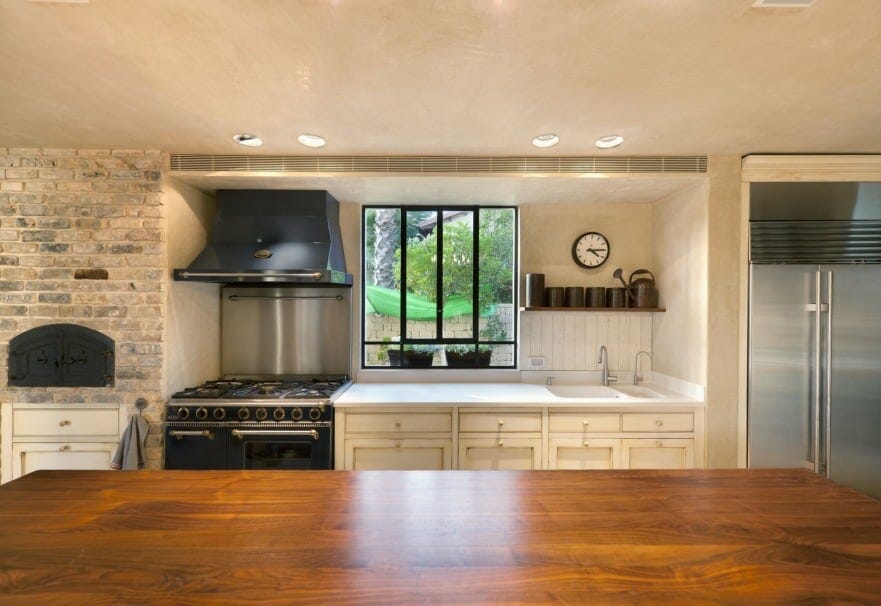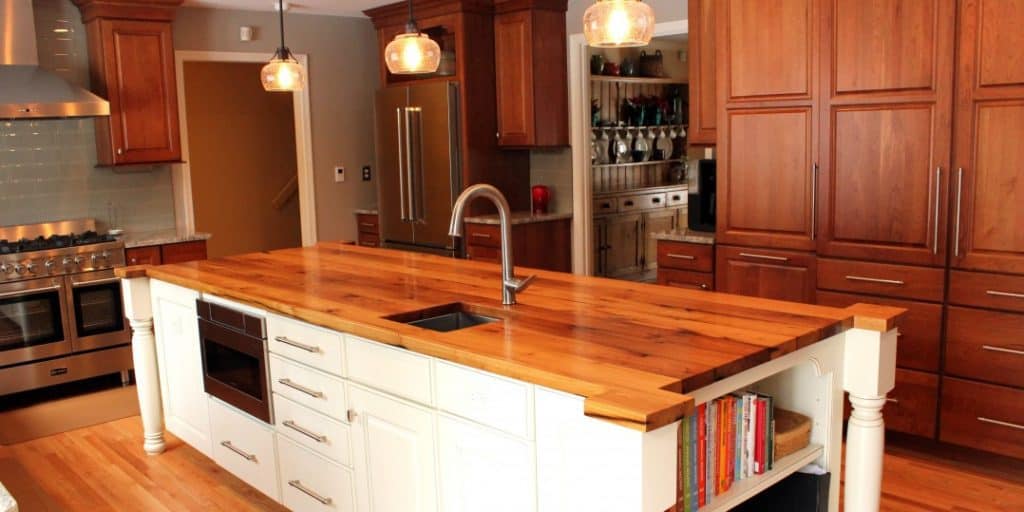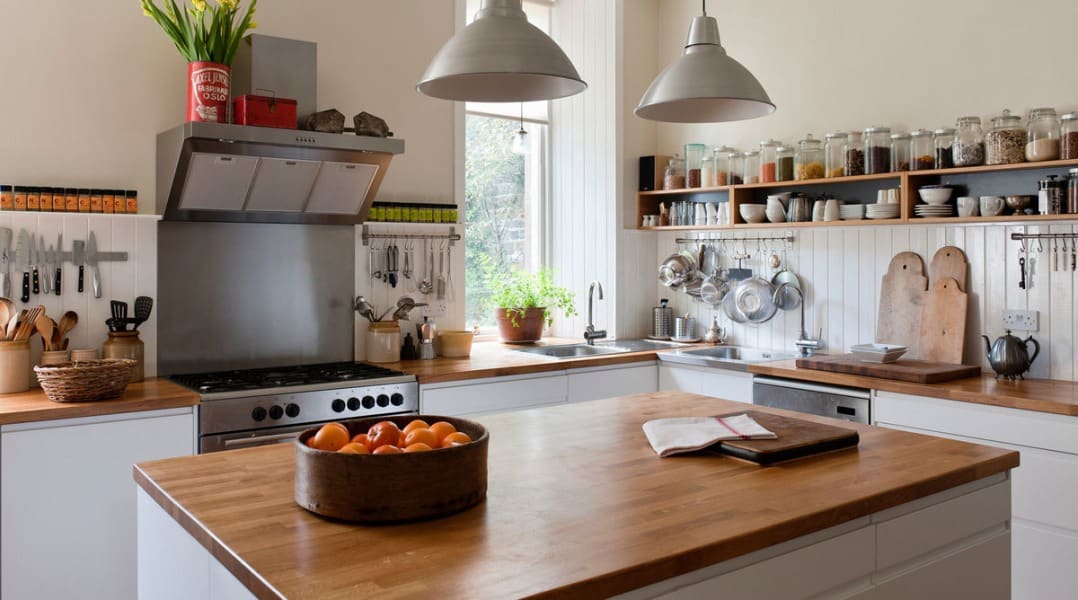Are you looking for a piece de resistance to complete your newly-renovated kitchen, bar, or living room? If you are, wood countertops may have crossed your mind. If you are into rustic interior design, installing a wood countertop makes sense. And did you know that you install one by yourself? In this guide, we will teach you on how you can make an inexpensive wood into a unique and attractive counter that you will definitely be proud of.
What Is A Wood Counter?

Wood counters are inherently sanitary as they are naturally equipped with protection against disease-causing germs and bacteria. And unlike other materials such as quartz, granite, and marble, they hardly suffer damage, and in the case of damage, you can sand away the unwanted blemishes to smooth out the surface yet again.
A wood counter is also an extremely flexible material since you may install it anywhere inside your home. You may place them in the kitchen right under your range, wet bar, or install them in the pantry.
Lastly, wood counters are very affordable, too. Depending on the size, thickness, construction, and species, expect to pay no more than $300. Additional costs will consist of the tools and other materials that will be used for installation. Compared to seeking professional wood counter sourcing and installation that may set you back up to $5000, a DIY project is a more sensible option for your home.
But before we start the installation process, let’s review some safety considerations:
Wood may be difficult to saw and drill. It is therefore advised to use a new, sharp saw blade for this project. You need to take your cuts slowly to prevent any damage to the wood and to your fingers, too!
Speeding up the cutting process will result in hang up and even kick back towards you. Always use protective equipment such as goggles and earplugs. Never wear thick gloves when using rotary saws.
Project Summary

Total working time: 5 hours
Skill level: Expert
Material cost: $100 to $200
Here are the tools you need:
- Cordless drill
- Drill bits
- Tape measure
- Clamps
- Clean cotton rags
- Table saw, or circular saw with a track system for accurate cuts
- Speed square
- Mineral oil
- Work light
- Long cardboard strips
- Hot glue gun
- Utility knife
- Goggles and earplugs
- Oscillating electric sander
- Electric blast sander
Here are the materials you need:
- Wooden slab
- 8 1 ½-inch thick zinc-plated corner braces
- 32 1-inch brass Phillips drive wood screws
- 1 x 10 board
Tips:
- Instead of measuring woodblock dimensions with a measuring tape, you can come up with more accurate measurements by using a template.
- You may use cardboard strips with perfectly straight edges to create the temperate. You may also consider using project panels.
- Lay-out the strips on top of your countertop or on top of the kitchen base cabinets to form the perimeter countertop. Connect all strips with hot glue. The cutout templates should be connected to the larger perimeter cutout. Use two strips minimum to connect all of them.
1. Cut the Wood Black Countertop

For accurate long cuts of large objects such as wood, it is recommended to use a circular saw, or a table saw that is fitted with a track system. If you don’t have these machines at home or if you are on a budget, you may also use a straight board to guide you with the circular saw. Use a 1 x 10 pine board as your guide. The board should not be thicker than 1 inch so that circular saw can easily pass over it. The wide 10-inch guarantees that the saw will not come into contact with the clamps that are holding the board to the countertop.
Given the backsplashes will overlap the countertop itself, less accurate cuts will be concealed by the backsplashes.
2. Install the countertop
Put the wood countertop on top of the base cabinets. Have someone assist you in holding down the countertop firmly in place. You may also place a heavyweight on top of the countertop.
Find access to the underside of the cabinet. Use a portable work light to guide you through installation. Bring the braces, screws, and drill when you work underneath the table.
First, you need to attach the L-shaped braces from the bottom of the wood countertop to vertical wood elements of the cabinet. Attach the ends of the countertop. The majority of cabinets feature wood braces that are running at one or more points through the middle portion of the cabinet and on sink-base cabinets. Attach the braces to these elements.
It can be challenging to drill holes on an upside-down orientation while firmly holding a bracket and a drill. One useful tip that will free up your hand is to place a rare-earth magnet on the countertop and position it right above the brace. This will hold the brace steadily, allowing you to better manage the screws and drills.
3. Sand and finish the countertop
It is ideal to use an electric sanding machine with fine-grit sandpaper to smoothen the surface of the wood countertop prior to sanding. You can also use oscillating sanding machine for surfaces that are in excellent condition. Rougher surfaces will highly benefit from the power of a belt sander.
4. Finish by oiling the surface

Wood countertops that are sealed with polyurethane will experience scratches and lose their coating over time. One of the best tips for wood countertops is to skip the heavy sealants and stick with finishing with mineral oils instead.
Rub a good amount of oil into the top surface with a clean cotton rag. Make sure to apply oil around the inside portion of the sink cutouts before installing the sink and your garbage dispoal units as well. With sinks, water can be absorbed into the sides of the cutout.
Use oil or another type of sealant that will prevent the water from soaking in the wood. You may also apply more mineral oil for maintenance purposes, to ensure that the pores close up and keep the surface of your countertop lustrous, too.


